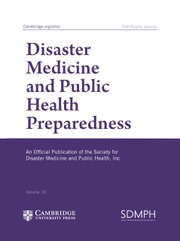No CrossRef data available.
Article contents
Sailing Through Choppy Waters: Management of Medical Oxygen Emergencies During the Second Wave of the COVID-19 Pandemic in India
Published online by Cambridge University Press: 18 November 2024
Abstract
During the second wave of COVID-19 pandemic, an increasing number of patients experienced breathlessness, which progressed to acute respiratory distress syndrome, leading to the need for supplemental oxygen therapy and mechanical ventilation. With each passing day, the need for medical oxygen increased and simultaneously medical oxygen reserves in the country were getting depleted. Government agencies deployed multipronged strategies to ensure that the hospitals had an adequate supply of medical oxygen. Mechanisms and formulae were devised for the rational allocation of medical oxygen to various regions in the country; the production of medical oxygen was boosted along with the curtailment of oxygen usage in industries; and efficient supply chain management, which included “Oxygen Express”— special trains for transporting oxygen, aircrafts for transporting medical oxygen, creating green corridors and real-time monitoring of oxygen levels using information technology. The usage and promotion of indigenous PSA oxygen technology augmented the medical oxygen generation capacity at the health care facility level. This emergency situation demonstrated a need for strengthening established intersectoral coordination mechanisms for swift and effective responses to similar situations in future. Various strategies adopted by the Central Government and other government agencies to a large extent helped in addressing the medical oxygen emergencies.
Keywords
- Type
- Brief Report
- Information
- Copyright
- © The Author(s), 2024. Published by Cambridge University Press on behalf of Society for Disaster Medicine and Public Health, Inc.


